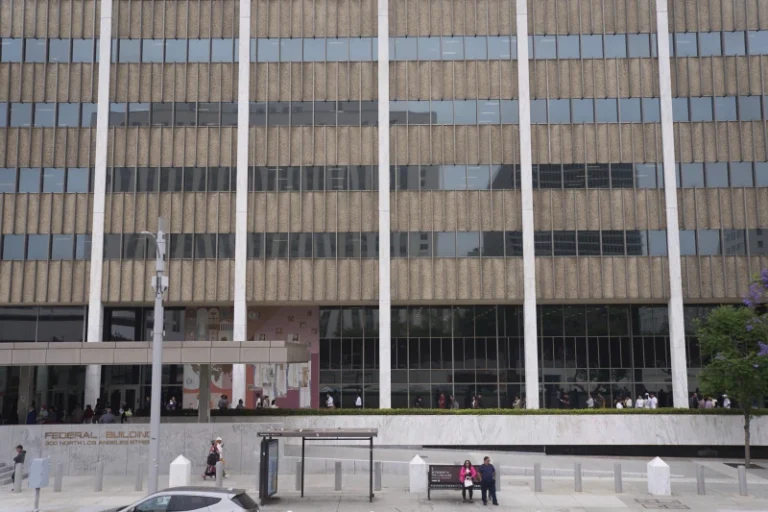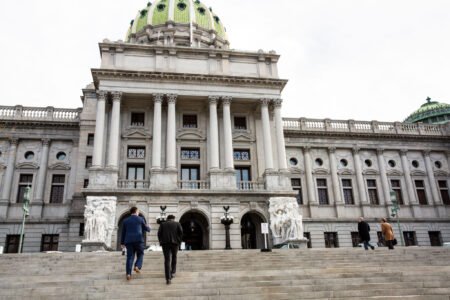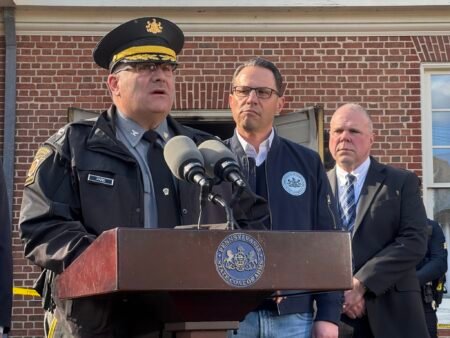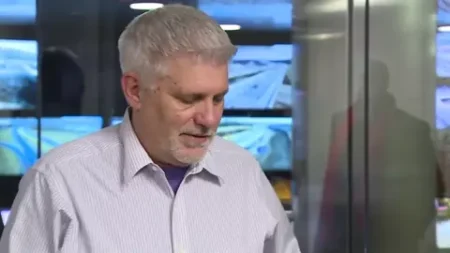Dozens of families now gather daily outside a federal immigration building in downtown Los Angeles. They wait in hope and fear after recent immigration raids shook the area. The building, guarded by U.S. Marines, has become a place where people look for answers, support, or a glimpse of loved ones.
The center’s basement is the first stop for many immigrants arrested by Immigration and Customs Enforcement (ICE). Officers confirm their identity and take fingerprints before moving them to larger detention centers. Above the basement, long lines form outside as other immigrants seek help with visas and asylum.
Families arrive early in the morning with bags full of medicine and clothes. They stand in a dirty stairwell leading to a locked door marked “B-18.” Here, they press a buzzer and wait. Most are not allowed inside. They spend hours outside, hoping to hear if their loved one is there. Many leave with no news at all.
Lawyers are among the few allowed entry after 8 a.m. Some families bring legal support, but even attorneys often struggle to get updates. One mother, holding her baby, said she had not slept since her husband’s arrest. Others share reports of awful conditions inside. Some detainees are said to be so thirsty they drink water from toilets. ICE has not responded to questions about the facility’s condition.
The tension outside the center has grown since aggressive ICE raids began on June 6. Officers in masks were seen in video clips shared on social media. These clips showed arrests near car washes, taco stands, and store parking lots. People from countries like Mexico, India, Iran, Guatemala, China, and Laos have been detained. Los Angeles County, home to 10 million people, has a large immigrant population. Nearly one-third were born in other countries.
Two weeks after the first wave of arrests, protesters gathered around the immigration center. They marched and chanted against the ongoing raids. Signs and graffiti remain on the building’s walls. Some of the writing includes harsh words against former President Donald Trump, whom many blame for the policies behind the arrests.
One woman, whose brother was arrested outside a hardware store, said she only found out after someone sent her a video of the scene. She rushed to the center the next day but was not allowed in or told if her brother was being held. Stories like hers are now common.
As the days pass, the same people return again and again. Some try calling, others bring more clothes or food. All hope for some news. Most go home without answers.
The impact of these ICE raids goes far beyond those who are arrested. Families are left broken, confused, and afraid. Children cry for parents who disappear without warning. Relatives miss work to search for loved ones. Community leaders warn that trust between immigrants and local officials is fading.
These raids have changed how people live and move in the city. Some parents have stopped sending kids to school. Others avoid driving or going to markets. Fear is everywhere.
The long stairwell leading to door “B-18” now holds many painful memories. It’s where hope, fear, and heartbreak meet. People come with love and leave with silence. This is the human cost of the ICE raids — seen not only in arrests, but in the pain of those left behind.







